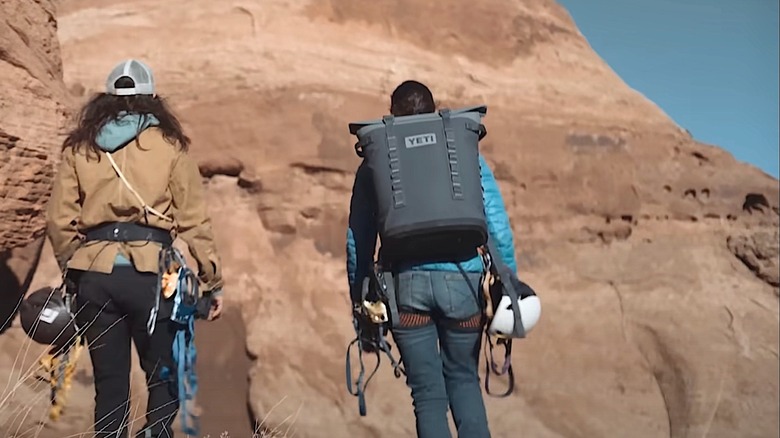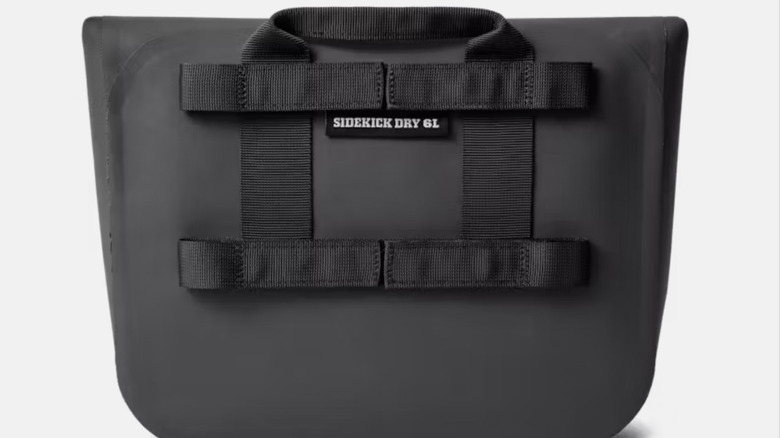What Are The Loops On Yeti Coolers For?
We may receive a commission on purchases made from links.
Since its founding in 2006, Texas-based cooler brand Yeti has gone from a family-owned startup to one of the most prominent names in the cooler game. While the company is no longer an independently owned operation, Yeti's coolers, backpacks, totes, and drinkware can now be sold by many major retailers, with consumers continuing to find favor with the brand's tough, innovative designs.
In terms of coolers, Yeti's soft-shelled offerings have proven particularly popular, even if certain products in the Hopper lineup were recalled due to a potentially dangerous design flaw. Apart from that issue, Yeti's Hopper coolers, as well as the brand's Camino Carryall and Panga Backpack, continue to offer users a handy little design extravagance in the guise of the HitchPoint Grid. If you're not familiar with that term, the HitchPoint Grid system is that little array of loops that are stitched into the front and sides of products from Yeti's Hopper, Camino, and Panga lineups.
Of course, if you weren't aware of what the HitchPoint grid actually is, it's possible that you don't know exactly why Yeti affixed the loops to strategic locations on those products. The purpose should be clear from the HitchPoint name, in that those loops are used to hitch items to your cooler when you want to carry them along wherever you and your Yeti go. If you're interested, Yeti even makes a couple of items specifically to use with the HitchPoint Grid system. Here's a look at how it works.
Here's how to use the loops on your Yeti gear
If you already own Yeti gear that with a HitchPoint Grid, you know that, while the loops are plentiful, they are not particularly large, which may limit the items you can affix to them. However, the loops can be quite useful for carrying smaller things like a flashlight, tool, or bottle opener that can be hitched up using a carabiner.
As noted, Yeti has also developed a product or two specifically for use with its HitchPoint Grid system. That includes the Sidekick Dry Bag. As the Dry Bag part of the name implies, the Sidekick — which comes in sizes 1L, 3L, and 6L — is ideal for water-centric adventures, as its Dryhide shell, welded seams, and Hydroshield magnetic closure make it completely waterproof. The Sidekick does, however, require a little more effort to attach to its compatible Yeti products. Here's how to hook one into a HitchPoint Grid:
- On the back of your Sidekick Dry Bag, release the Velcro hitch and loop straps.
- Slide the bottom two straps through the desired loops on your compatible Yeti cooler, tote, or backpack.
- Once you've secured those straps, repeat the step with the top straps, securing them to the corresponding HitchPoint loops.
Your Sidekick bag should now be secure. From there, feel free to drop your phone, wallet, car keys and other valuables inside knowing that they'll remain safe and dry where you may roam.

